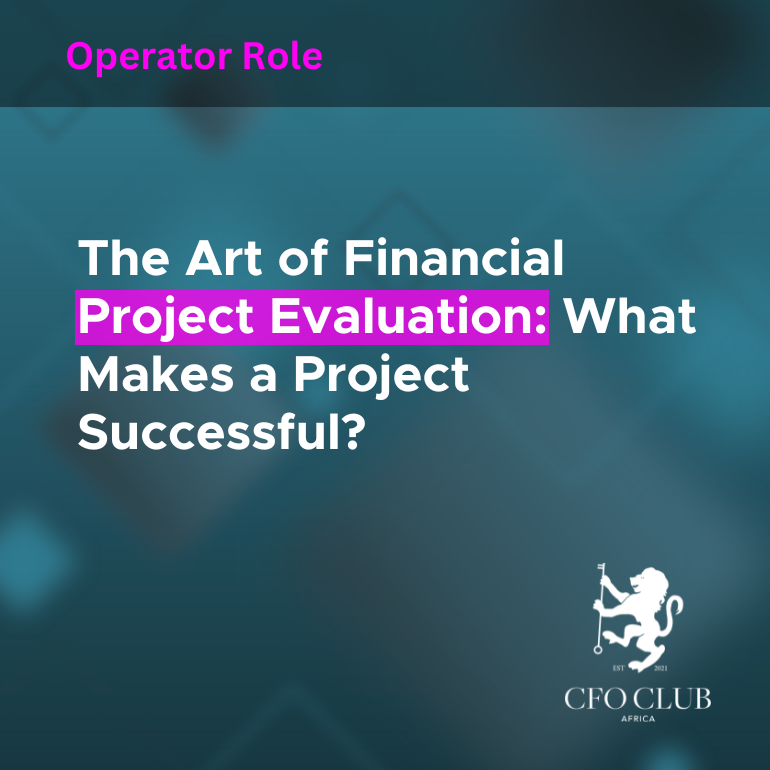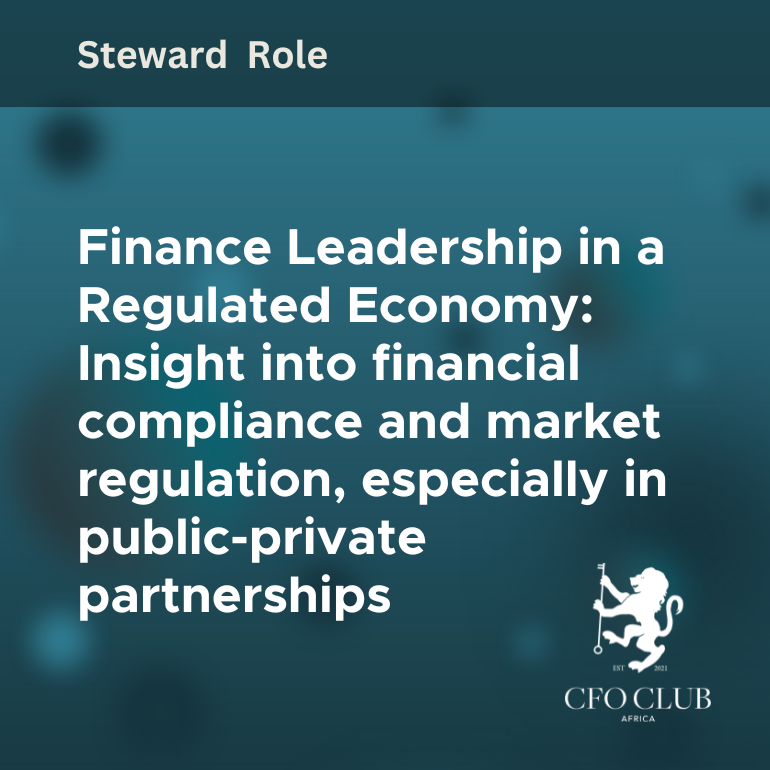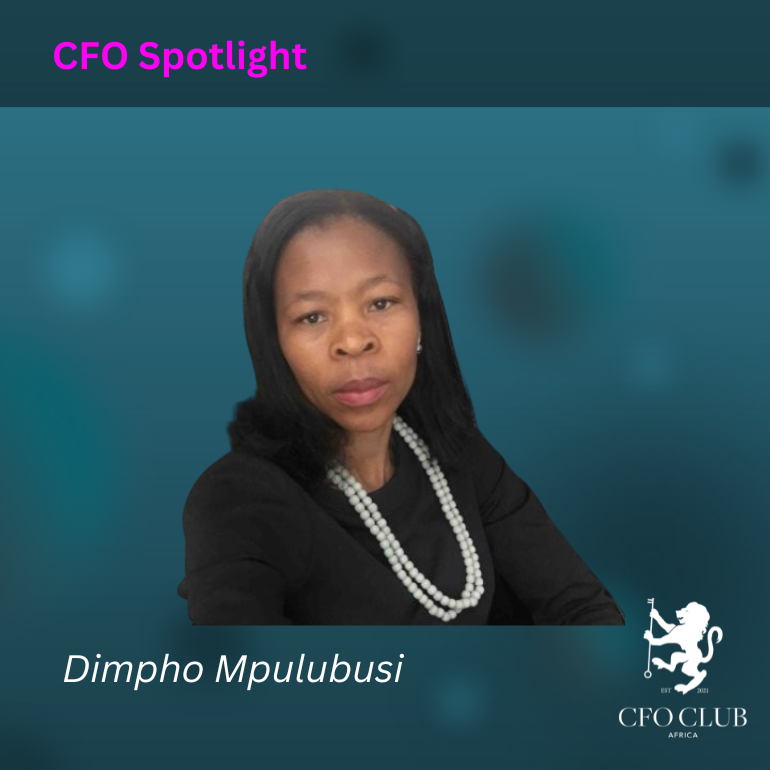The Art of Financial Project Evaluation: What Makes a Project Successful?
The Art of Financial Project Evaluation: What Makes a Project Successful?
Ever greenlit a project that looked perfect on paper—only to watch it unravel six months later? For CFOs, making the wrong call can cost more than just money. It can derail growth, damage credibility, and put you on the defensive with the board. Yet the real challenge is that most financial evaluations don’t fail because of bad math’s—they fail because they miss the bigger picture.
Too often, project evaluation is treated as a box-ticking exercise: plug in some numbers, check a few ratios, and make a call. But in today’s environment—where capital is scarce, markets shift fast, and expectations are high—CFOs can’t afford that approach. Evaluating projects is no longer just about approving funding. It’s about making strategic bets on the future of your organisation.
It’s Not Just About the Numbers
Yes, the basics still matter. You need to know if a project will generate value. Net Present Value (NPV), Internal Rate of Return (IRR), Payback Period—these remain essential tools in any financial leader’s kit. But what separates strong CFOs from average ones is the ability to move beyond formulas.
Every model relies on assumptions—about revenue growth, margins, timing, and costs. If those assumptions are shaky, your entire evaluation collapses. That’s why top CFOs don’t just run the numbers—they stress test them. They ask: What happens if our costs go up by 10%? What if the market doesn’t respond the way we expect? What if there’s a delay in delivery?
If your project evaluation can’t handle those questions, you’re not doing due diligence. You’re gambling.
Strategy First, Finances Second
A project might look great in isolation, but does it fit your business strategy? Will it support your long-term goals—or distract your team from what really matters? CFOs need to evaluate alignment just as closely as they evaluate cash flow.
That means pushing beyond the spreadsheet and asking:
- Will this move make us more competitive?
- Does it open new doors—or tie us to outdated models?
- Is it something only we can do well, or are we stepping into someone else’s lane?
Strategic fit isn’t a “nice-to-have”—it’s the foundation of success. Projects that align with your vision are easier to fund, easier to defend, and far more likely to deliver long-term value.
Risk Is Real—Account for It
One of the biggest blind spots in project evaluations? Assuming things will go according to plan. They won’t.
That’s why great CFOs build downside protection into their assessments. They use scenario planning to map out best, base, and worst-case outcomes. They look at what could go wrong—and plan for it before the project even starts.
That includes:
- Market risks (demand fluctuations, competitors moving faster)
- Operational risks (supply chain, staffing, technology delays)
- Regulatory risks (especially in tax, compliance, or highly governed industries)
CFOs who ignore risk end up cleaning up messes. CFOs who plan for risk become the board’s go-to for stability.
Stakeholders Matter—Internally and Externally
Even the best project would stall if no one’s bought in. Your numbers might be watertight, but if operations aren’t ready or marketing hasn’t been looped in, execution will suffer.
CFOs need to lead cross-functional conversations—early. Before funding is committed, get input. Pressure test timelines. Confirm resource availability. And don’t forget your external stakeholders: funders, shareholders, even regulators may need to understand the business case.
A good financial plan speaks numbers. A great one tells a story that makes people say, “Yes, we need to do this.”
Timing Isn’t Everything—But It’s Close
A project approved too early might flounder from lack of readiness. Approve it too late, and you’ve missed the wave. Timing matters.
This is where business acumen trumps technical skill. CFOs must read the market, sense the shift in customer sentiment, and understand the broader economic climate. If interest rates are climbing, labour is tightening, or competitors are accelerating, all that feeds into when—not just if—a project should proceed.
Good timing doesn’t guarantee success. But bad timing almost always guarantees pain.
Execution Capability—Often Overlooked, Always Crucial
One hard truth: projects fail not because the idea was wrong, but because the team couldn’t deliver. If you don’t factor in your company’s execution muscle, you’re setting yourself up.
Can your team meet the timelines? Are your systems ready? Will external partners show up with the same urgency? CFOs who ask these questions early protect their organisation’s cash—and their own reputation.
If the business isn’t ready to execute, no amount of Excel magic will save you.
What Does a Successful Project Look Like?
From a CFO’s seat, a successful project isn’t just profitable. It:
- Aligns with the company’s strategic direction
- Delivers value over time, not just in the first year
- Survives pressure testing under different scenarios
- Gets buy-in from decision-makers and implementers
- Is executed efficiently, without budget blowouts
- Positions the organisation to grow, compete, and evolve
This is the lens CIBA encourages you to bring to your work. Being technically strong is only part of the game. To lead in your organisation—and in your profession—you need to combine financial insight with commercial sharpness, strategic thinking, and real-world judgement.





